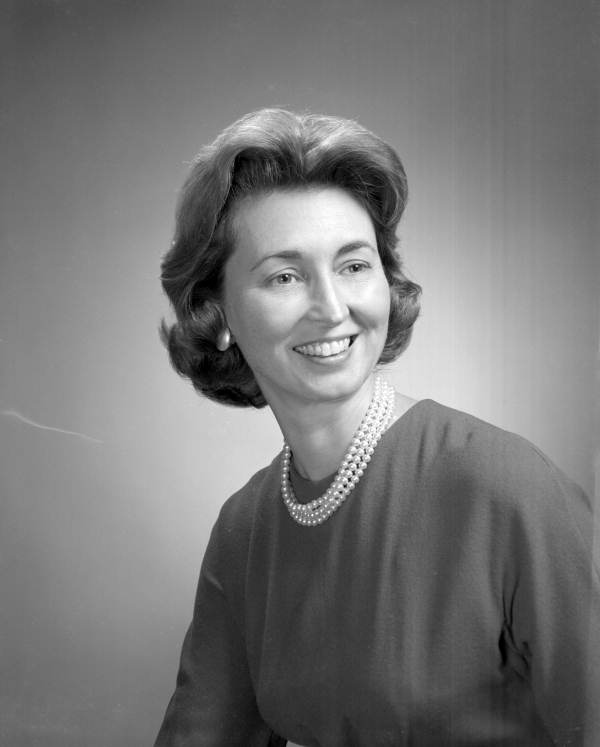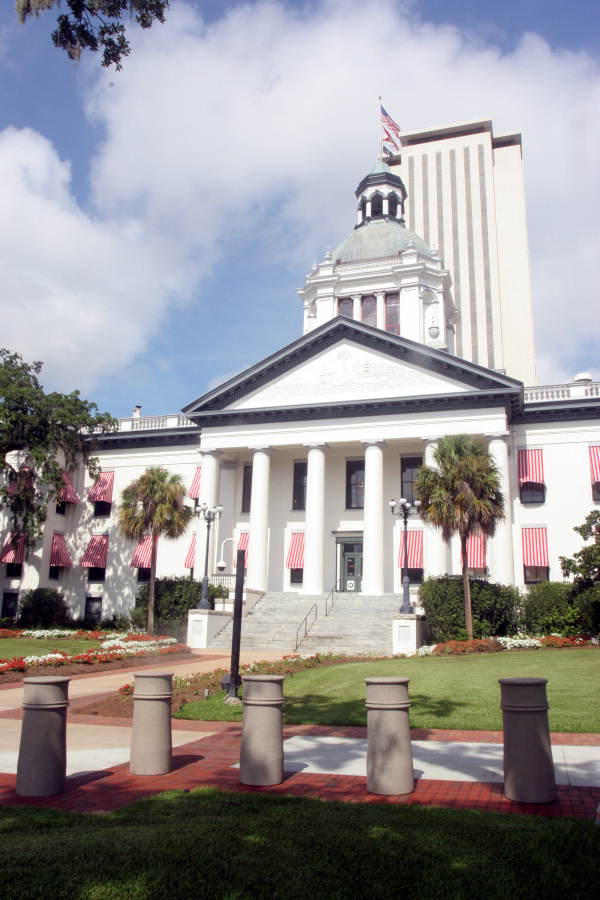Description of previous item
Description of next item
Save the Capitol!
Published May 5, 2014 by Florida Memory
With its candy-striped awnings and ornate art glass dome, Florida’s Old Capitol is an architectural reflection of a bygone era, as well as an excellent example of a grassroots historic preservation effort. For over a century, the building served elements of all three branches of government. Over time, however, Florida outgrew its Capitol, and in 1977 a new twenty-two story building was erected just behind it. The Old Capitol was first slated for demolition, but when Tallahassee locals discovered the state’s intent to raze one of the oldest landmarks in the city, the Historic Tallahassee Preservation Board quickly mobilized a resistance, urging Floridians to preserve their history and “Save the Capitol!”
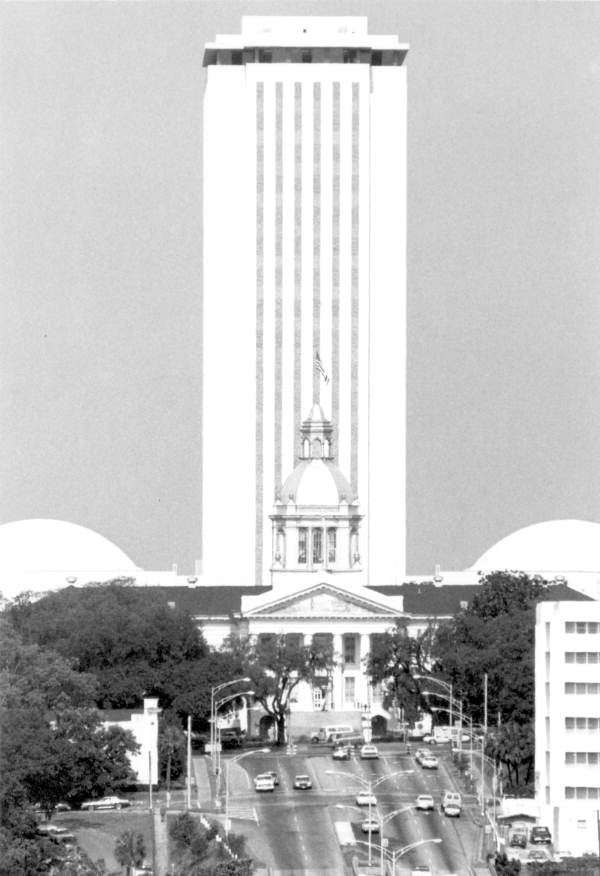
A mid to late 1970s view of the east front of new Capitol with Old Capitol in front, just as those engaged in the preservation battle would have seen it.
Perhaps some 1970s legislators were blind to the important symbol of a democratic state government, but from 1839 until 1977, the Old Capitol bore witness to numerous important milestones in Florida’s history. Two years after establishing Tallahassee as the capital of the sparsely populated Florida territory in 1824, three log cabins were built for conducting government business. But by the following decade, the territory seemed destined for statehood, and Governor Richard Keith Call asked the legislature for a larger space in 1839. The new brick and mortar statehouse proved a worthwhile investment when it was completed in 1845. In that same year, Florida became the 27th state to join the Union, and William Dunn Moseley, the first elected governor, was sworn into office beneath the new Capitol’s east portico, commencing the state’s history.
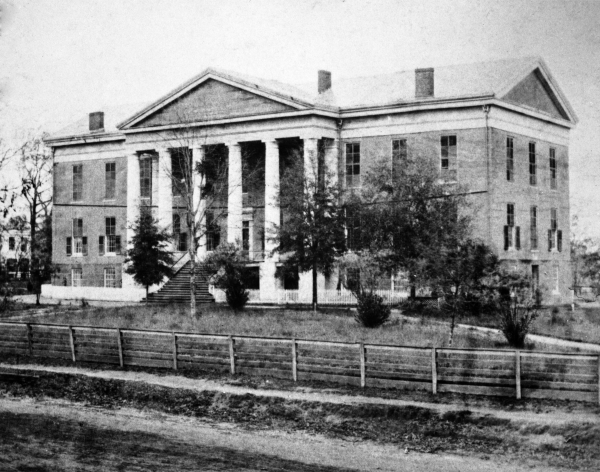
Though taken sometime in the 1870s, the above photograph captures the Old Capitol’s original 1845 appearance, before the addition of a small cupola in 1891 and then the familiar dome in 1902.
In an effort to accommodate a growing state government, Florida’s Capitol underwent a series of structural changes. However, its current appearance was restored to honor the 1902 work of Frank Pierce Milburn, who added a stately copper dome.
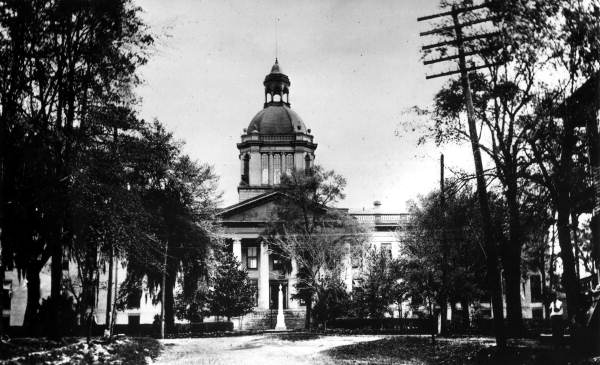
View of the west front of the Old Capitol after Milburn’s 1902 additions, Tallahassee, between 1902 and 1922.
Further renovations occurred in 1923, 1936 and 1947. Despite physical alterations, the Capitol remained a firm symbol of democracy as Florida’s political landscape continued to evolve into the 20th century.
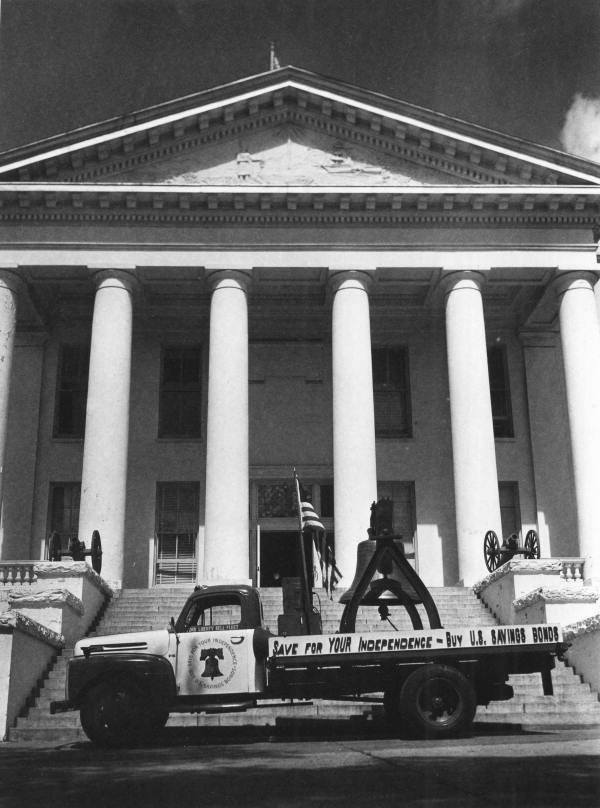
A replica of the Liberty Bell displayed during a savings bond drive at the Old Capitol highlights the structure as a physical centerpiece of government action in Florida, June 1950.
However, by the early 1970s it was clear that Florida government had outgrown its Tallahassee headquarters. Thus, the 1972 Legislature appropriated funds for a new, mammoth Capitol Complex, intending to destroy the Old Capitol after finishing the project. When it finally opened in 1977, a faction of politicians, including Governor Reubin Askew and House Speaker Donald Tucker, remained in favor of the original demolition plan, but an unexpected backlash would challenge the proposed action.
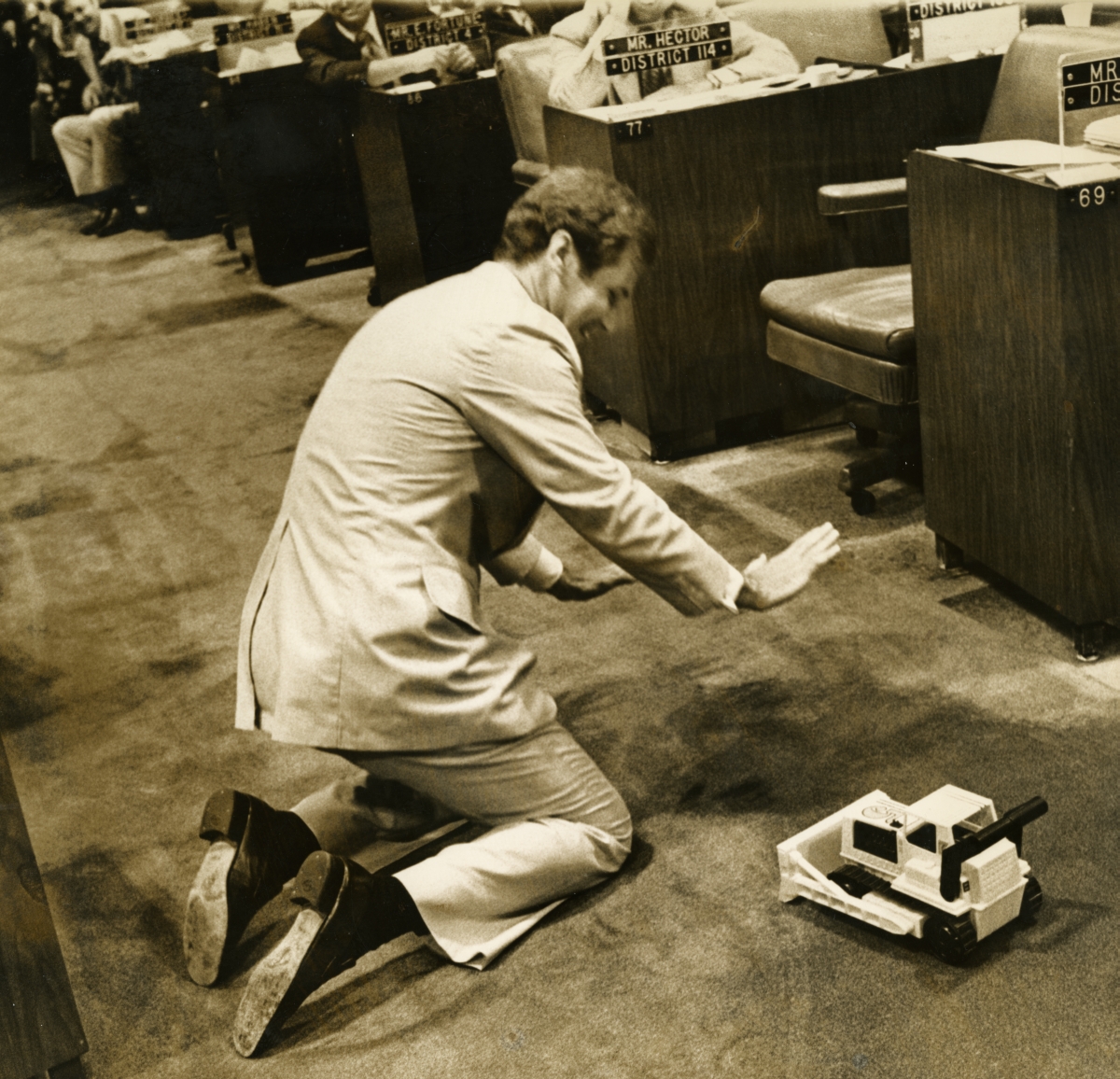
Nelson to the rescue! Rep. Bill Nelson, D-Melbourne, throws his body in front of the “first” bulldozer to show up at the Old Capitol. Nelson made the statement earlier in the session that efforts to save the Old Capitol had so frustrated him that he felt like he would throw his body in front of the first bulldozer that showed up to begin to raze the historic structure. Nelson was true to his word as Reps. Hill and Haben wound up a toy and started it down the aisle of the house chamber, May 18, 1977.
Nancy Dobson, a historian and director of the Historic Tallahassee Preservation Board, spearheaded the opposition, enlisting the support of Secretary of State Bruce Smathers. Soon, legislators, academics and the interested public began expressing their indignation over the idea of eliminating such a significant historic landmark. “If the political powers within the state decide to destroy the building in which they themselves have a sentimental and historical involvement, what will be their attitude toward other preservation efforts in the state with which they may have little or no personal relationship?” Dobson questioned.
Like many other historic preservation campaigns, the race to save the Old Capitol was led primarily by female activists. Their work culminated in an event orchestrated by Mrs. Bruce Smathers. On March 30, 1978, “Save the Capitol Night” hosted guests at the site for music, tours and an opportunity to sign a petition in favor of preservation. Kicking off the festivities was a local folk band who performed on the steps, encouraging audiences to “save that grand old southern lady on the hill.”
Ultimately, the campaign was a success, and the Old Capitol, restored to its 1902 appearance, opened as a public museum in 1982.
The State Archives holds collection M95-1, which documents efforts to save the historic Capitol building from demolition as the new Capitol Complex was being constructed. The collection includes correspondence between concerned citizens and the Secretary of State’s office, newspaper articles, research notes, architect proposals, plans and blueprints, coordination conference minutes and copies of photographs (ca. 1890s) of the Old Capitol.
Cite This Article
Chicago Manual of Style
(17th Edition)Florida Memory. "Save the Capitol!." Floridiana, 2014. https://www.floridamemory.com/items/show/295173.
MLA
(9th Edition)Florida Memory. "Save the Capitol!." Floridiana, 2014, https://www.floridamemory.com/items/show/295173. Accessed December 27, 2025.
APA
(7th Edition)Florida Memory. (2014, May 5). Save the Capitol!. Floridiana. Retrieved from https://www.floridamemory.com/items/show/295173

 Listen: The Bluegrass & Old-Time Program
Listen: The Bluegrass & Old-Time Program